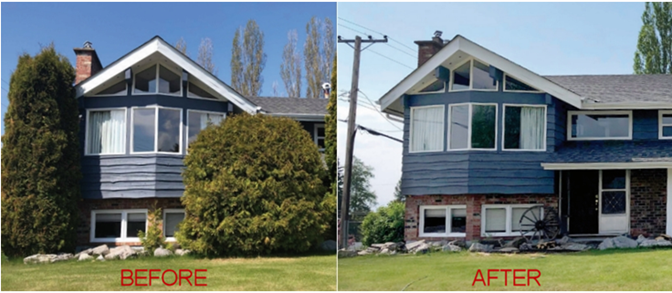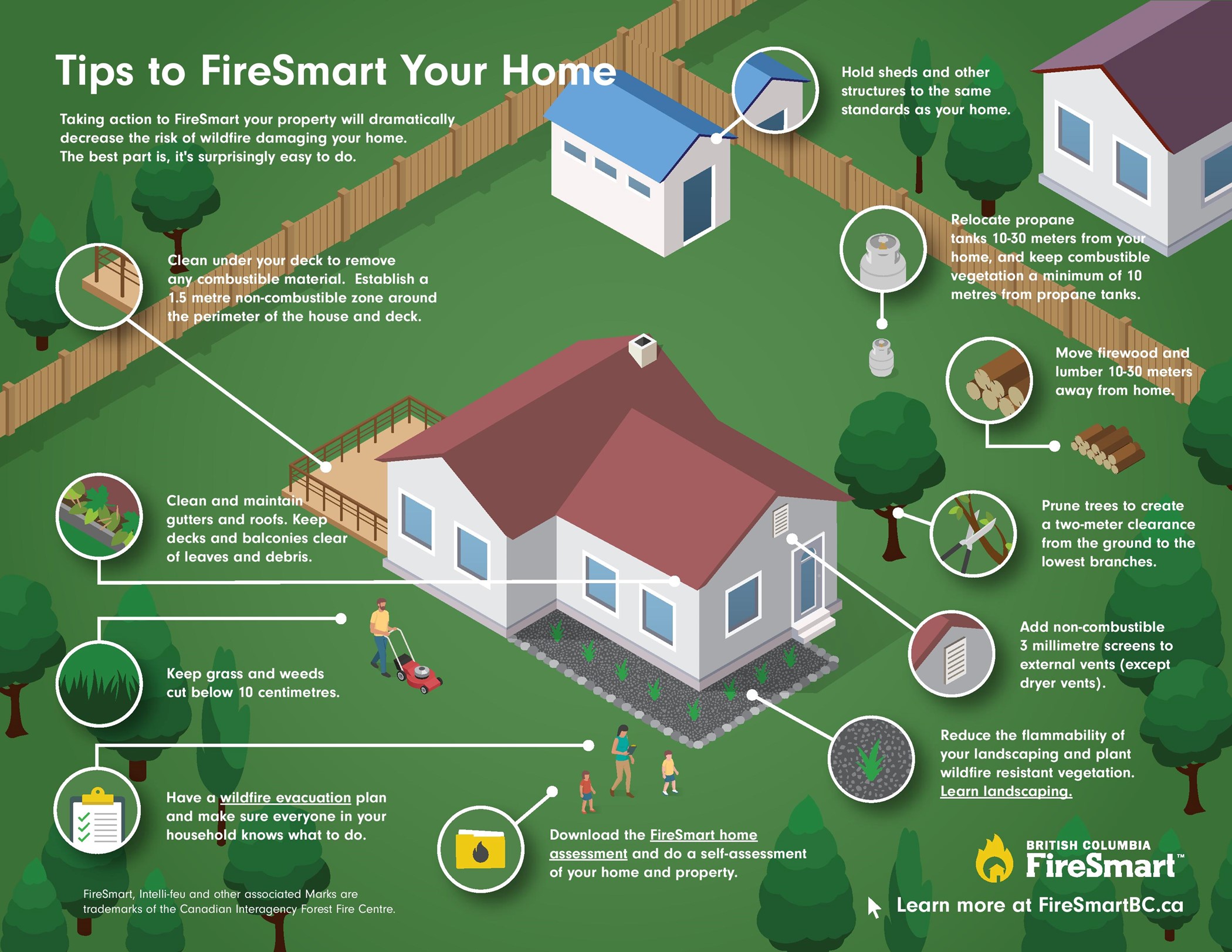As we prepare for another wildfire season in Alberta, it is always a good idea to ensure you are ready if an emergency arises. Here are some steps to take to help get everyone ready for the potential dangers of wildfire season:
- Ensure fire department has completed their pre-season checks
- Ensure mutual aid agreements are up to date
- Review Emergency Response Plan (ERP)
- Ensure staff is trained on the ERP
- Understand who is responsible for executing the ERP
- Review insurable assets and ensure adequate coverage is in place
- Review to ensure new assets are insured (buildings, equipment, vehicles)
- Conduct building assessments (note any dry/dead vegetation and address concerns)
- Regularly review Wildfire Hazard Assessments (can be requested through local wildfire officers)
- Conduct a walk-through of the emergency evacuation building. Are there any immediate concerns that need to be addressed? Are there adequate supplies? How is the building condition overall?
- Public Awareness Plan- Where can your ratepayers look for up to date information? How is this communicated to your ratepayers?
- If your area is prone to wildfires, keep a “go bag” in your vehicle throughout the season.
- Clean building exterior: The area around your building may have dry leaves, branches and other debris that may have moved in before the snow. To minimize the risk of fire, take the time to clean all debris and flammable materials. Properly dispose of any waste.
- Assess and clean roof and gutters: Check your roof and gutters. Gutter and roof cleaning in the spring is a crucial way to ensure that if wildfire approaches, there is no flammable materials in those areas that can easily ignite by flying embers. Monthly inspection of gutters is recommended to ensure they remain clear of debris. You can also install gutter guards to prevent debris from settling in gutters.
- Maintain your lawn: Maintaining your lawn and green space is vital to ensure the area does not become dry during the wildfire season. Water green space often and ensure shrubs and other plants are watered regularly as well. Pay close attention to any green space near the building.
- Reduce highly flammable plants: Certain plants can be more flammable than others. Something to consider when checking the property is looking for plants with qualities that are highly flammable and could fuel a wildfire if one approaches. Instead, add plants that do not provide significant fuel to fires.
- Prune trees: There are a wide variety of trees that are more resistant to fire that you can include in your landscaping. Trees such as maple, birch, popular, aspen, cherry, and alder are all more fire resistant than coniferous trees (cones and needle types such as pine and fir). As part of your spring cleaning, take the time to prune any branches that are within two metres of the ground and remove any flammable debris that may have fallen.
- Create a wildfire evacuation plan: Having a detailed plan in place can be crucial for responding quickly should a wildfire approach. An effective plan will help ensure a timely response. Have an emergency wildfire checklist and ensure all items are completed when evacuating to ensure a successful evacuation. Items on the checklist should include:
- Shutting down the power and water to the building if necessary
- Leaving gates open so emergency response can respond to the area
- Placing a sign on the exterior door(s) indicating the building has been cleared of all personnel (this is a great idea for work and at home)
- Clearing away any debris on the building exterior and moving combustibles a safe distance from building
- Evacuation expenses means the reasonable and necessary expenses incurred during the evacuation period to transport and house designated persons. Evacuation expenses includes evacuation of designated persons, maintenance of designated persons in another location, and the return of designated persons to the covered location or, if the covered location is not habitable, to a suitable alternative location.
- Designated persons means:
- Residents and lawful occupants at a covered location; and/or
- Those employees who are essential to implement the mandatory evacuation order at a covered location.
When a wildfire starts, it only takes hours for it to become an emergency. Make sure everyone is ready for the season and plans are in place should the worse-case scenario arise.
FireSmart Tips: How to Protect Your Property for Wildfire Season
| Highly Flammable Plants | Less Flammable Plants |
|---|---|
| Leaves that have a strong odor when crushed | Moist leaves |
| Fine, dry or dead material, like bark, twigs, needles, and leaves within plants | Water-like sap with little to no odor |
| Trees, branches, and stems with a gummy sap | Very little dry or dead materials |

Source: https://www.cnv.org/home-property/fire-department/firesmart
FAQs
What happens if I send my fire trucks to another area to help? Am I covered?
There is coverage to protect the fire truck against damage and liability. It is always within best practices to ensure that you have a mutual aid agreement, and that the agreement is up to date.
What is covered if I need to commandeer equipment to assist in the fire efforts?
Commandeered Equipment: It is understood and agreed that this Policy is hereby extended to cover property of a similar nature to that insured which has been commandeered by the Named Insured for their use, provided all such property is reported to the Insurer(s) within Thirty (30) days from the date of commandeering. It is agreed that an Additional Premium will be paid by the Insured at the rate applicable under this Policy, pro-rated from the date of commandeering to the expiration or termination thereof.
It is further understood and agreed that the Limit of Liability as respects to commandeered equipment shall not exceed the amount stated in clause 8 of the Declarations hereof.
What evacuation coverage is available?
Emergency Evacuation Expense: Subject to a limit of two hundred and fifty thousand dollars ($250,000) any one occurrence, this policy is extended to cover all reasonable and necessary evacuation expenses incurred by the insured as a result of compliance with a mandatory evacuation order which requires the evacuation of a covered location(s) and first occurs during the period of insurance.
This additional coverage is provided for up to thirty (30) days after the mandatory evacuation order with respect to each covered location, but not for any period of time beyond ninety-six (96) hours after the date and time the appropriate civil authority allows a return to each covered location (hereinafter, this period of time is referred to as the evacuation period).
The following additional definitions apply to this extension:


